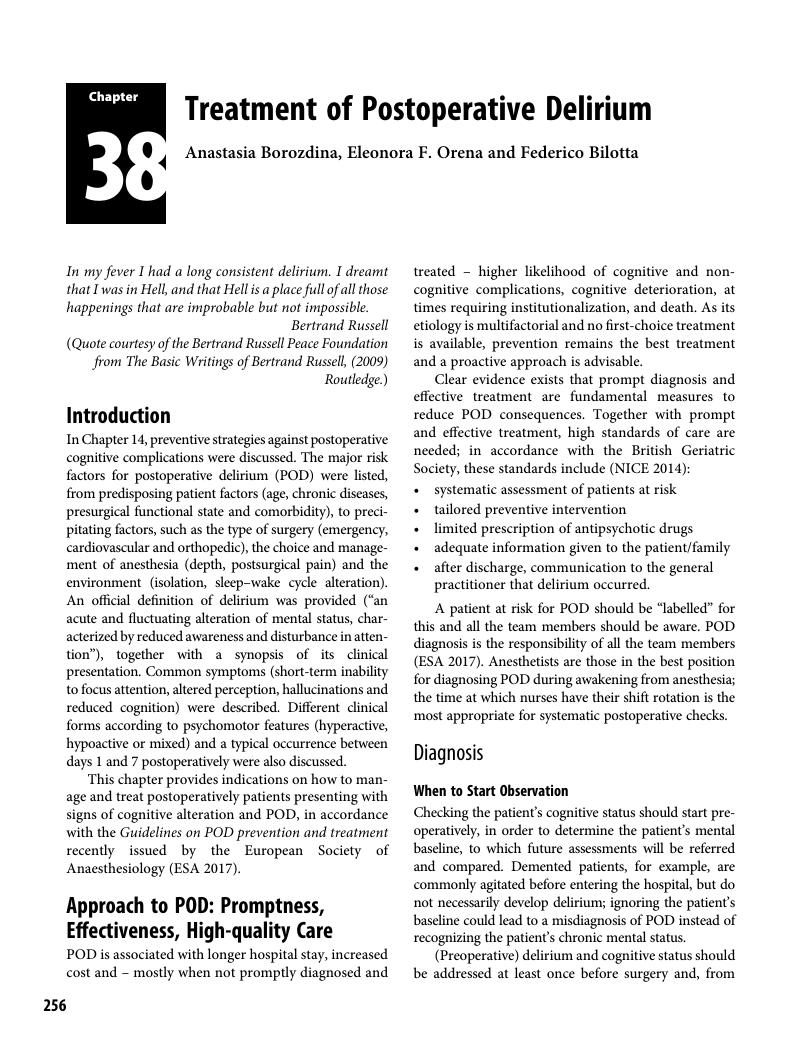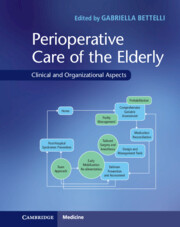Book contents
- Perioperative Care of the Elderly
- Perioperative Care of the Elderly
- Copyright page
- Contents
- Contributors
- Forewords
- Preface
- Introduction: Population Aging, Healthcare Systems and Surgery
- Section 1 Preoperative Evaluation
- Section 2 Preparation for Surgery
- Section 3 Intraoperative Management
- Section 4 Postoperative Management
- Chapter 30 The Elderly in the Recovery Room
- Chapter 31 Endocrine and Metabolic Response to Surgical Stress in the Elderly
- Chapter 32 Postoperative Pain Treatment
- Chapter 33 General Principles of Postoperative Recovery
- Chapter 34 Fast-track and ERAS Programs in Geriatric Surgery
- Chapter 35 Postoperative Nursing
- Chapter 36 Cardiovascular Complications
- Chapter 37 Perioperative Venous Thromboembolism in the Elderly: Prevention and Treatment
- Chapter 38 Treatment of Postoperative Delirium
- Chapter 39 Postoperative Respiratory Complications
- Chapter 40 Renal Complications
- Chapter 41 Postoperative Admission to the Intensive Care Unit
- Chapter 42 Prevention of Postoperative Geriatric Syndromes
- Chapter 43 Planning for Discharge
- Chapter 44 Ethics in Geriatric Surgery, End-of-Life and Palliative Care
- Section 5 Key Issues for Optimal Organization
- Index
- References
Chapter 38 - Treatment of Postoperative Delirium
from Section 4 - Postoperative Management
Published online by Cambridge University Press: 16 November 2017
- Perioperative Care of the Elderly
- Perioperative Care of the Elderly
- Copyright page
- Contents
- Contributors
- Forewords
- Preface
- Introduction: Population Aging, Healthcare Systems and Surgery
- Section 1 Preoperative Evaluation
- Section 2 Preparation for Surgery
- Section 3 Intraoperative Management
- Section 4 Postoperative Management
- Chapter 30 The Elderly in the Recovery Room
- Chapter 31 Endocrine and Metabolic Response to Surgical Stress in the Elderly
- Chapter 32 Postoperative Pain Treatment
- Chapter 33 General Principles of Postoperative Recovery
- Chapter 34 Fast-track and ERAS Programs in Geriatric Surgery
- Chapter 35 Postoperative Nursing
- Chapter 36 Cardiovascular Complications
- Chapter 37 Perioperative Venous Thromboembolism in the Elderly: Prevention and Treatment
- Chapter 38 Treatment of Postoperative Delirium
- Chapter 39 Postoperative Respiratory Complications
- Chapter 40 Renal Complications
- Chapter 41 Postoperative Admission to the Intensive Care Unit
- Chapter 42 Prevention of Postoperative Geriatric Syndromes
- Chapter 43 Planning for Discharge
- Chapter 44 Ethics in Geriatric Surgery, End-of-Life and Palliative Care
- Section 5 Key Issues for Optimal Organization
- Index
- References
Summary

- Type
- Chapter
- Information
- Perioperative Care of the ElderlyClinical and Organizational Aspects, pp. 256 - 261Publisher: Cambridge University PressPrint publication year: 2017

